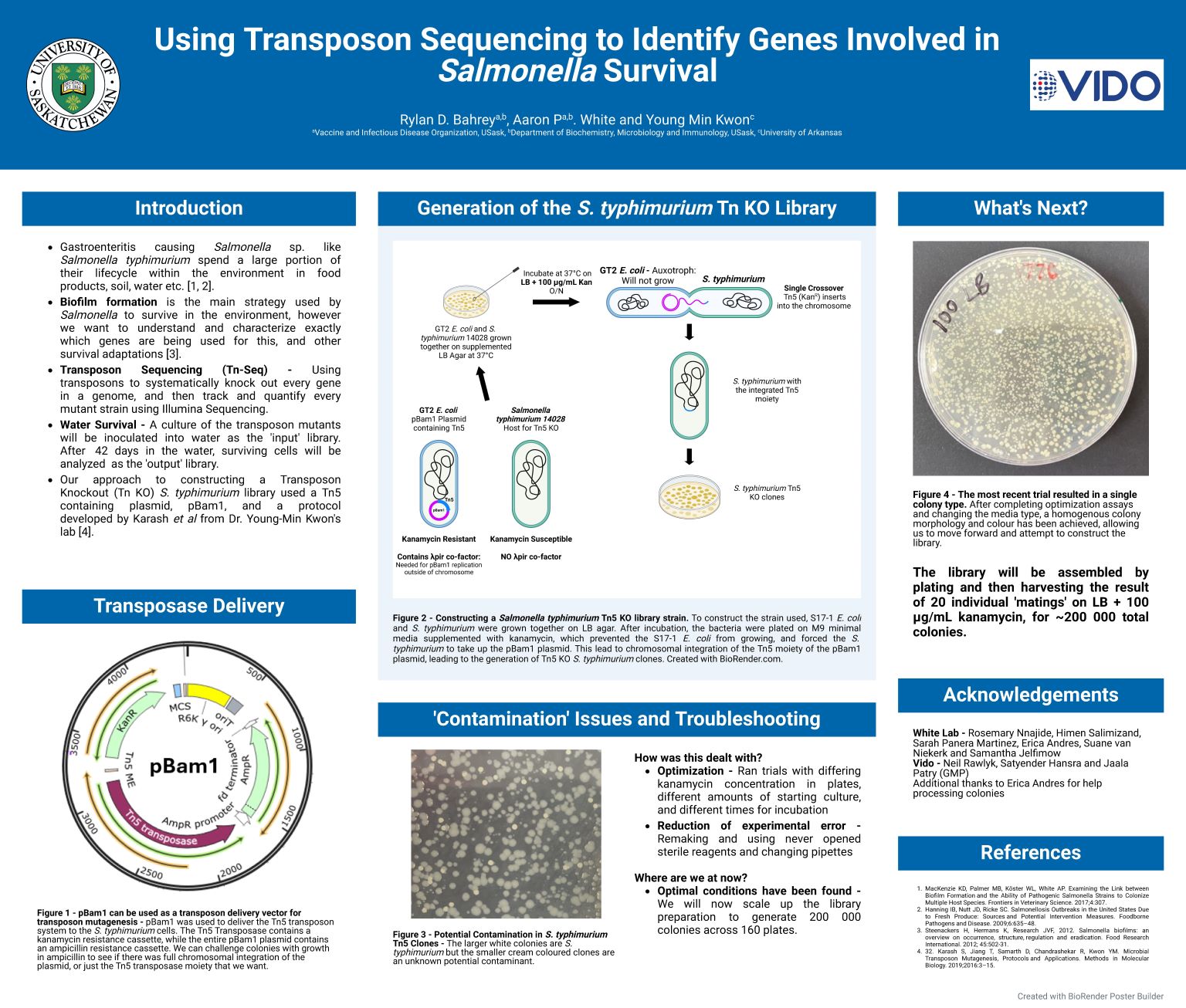
Using Transposon Sequencing to identify genes involved in Salmonella survival
Rylan Bahrey
Gastroenteritis causing Salmonella were recently ranked as the most significant food borne pathogens in terms of global disease impact. ‘Survival in’ and ‘Transmission from’ water sources are known to be important for the pathogenic success of gastroenteritis-causing Salmonella. A Tn-Seq library in S. Typhimurium 14028 was generated and will be used to identify Salmonella genes that are important for survival in water. Tn-Seq works on the principle that an entire population of knockout mutant strains (‘a transposon library’) can be tracked and quantified using Illumina DNA sequencing. This was done by using an E. coli donor strain with a transposon-delivery plasmid, that upon mating with S. Typhimurium 14028, generated a saturated transposon library. Prior to the water survival experiment, even distribution of mutants will be confirmed by sequencing. A culture of the Tn-Seq library will be inoculated into water and characterized on Day 1 as the “input” library. On Day 42, the population of surviving cells (~10%) will be analyzed by sequencing and compared to the starting input. Performing this sequence comparison on multiple replicates will allow us to identify mutants that are consistently missing from the Day 42 samples, versus strains that are missing due to chance.
